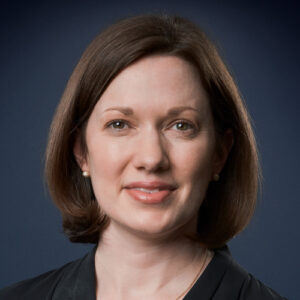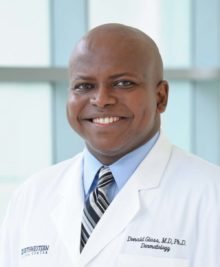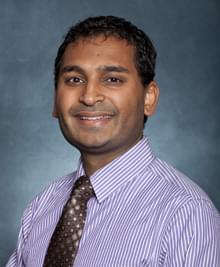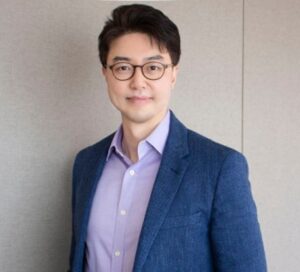Steve Hoseong Yang, MD, PhD
Medical Director, Guam Dermatology Institute
Diplomate, American Academy of Dermatology
2014 Skin of Color Society Research Award Winner
Title of research: Epigenetic Changes in Ethnic Human Skin During Skin Aging
Dr Yang was born in Seoul, Korea and grew up in Jakarta, Indonesia before moving to the US at age 12. He attended Phillips Andover Academy, Johns Hopkins University (BA), Univ of Michigan Ann Arbor (MD, PhD), and completed Dermatology residency at Johns Hopkins School of Medicine where he served as the Chief Resident, and as Assistant Professor from 2014-2019. In 2019, Dr Yang opened his practice in Guam, where he is the only full time permanent dermatologist.
1. Tell us about your current job and what you enjoy most about it?
I run an extremely busy but highly rewarding practice in Guam, a territory of the US 6,000 miles away from the west coast. As the only dermatologist serving a severely medically underserved area, I am faced with many challenges but I am blessed to have a great team.
2. Do you have a specific area of interest/niche within your specialty and if so, how did you decide on it?
All facets of dermatology interest me. I was fortunate to have trained with the best mentors at Johns Hopkins who helped to set strong foundations in medical, surgical and investigative dermatology. Since moving to Guam, I was also fortunate to train with Dr. Kee Chung, Professor of Dermatology and Mohs surgeon at Yonsei School of Medicine in Korea.
3. What is your research area of interest and what do you enjoy most about your research?
I have always been committed to the research of skin cancer and skin aging, especially in ethnic skin. I am planning to build a comprehensive clinical research center in Guam in the near future. Due to my proximity to Korea and rest of Asia, I am actively engaged in numerous research projects with academic centers and pharmaceutical companies in Asia.
4. What was your research study for which you received the SOCS grant?
With the SOCS grant, I studied the epigenetic changes of ultraviolet light exposure on ethnic skin.
5. How did receiving the SOCS Research Grant affect your career?
SOCS grant helped jump start my academic career at Johns Hopkins and enabled me to fund my research lab. I am eternally grateful!
6. Have you been involved with SOCS in other ways?
I am fortunate to continue my life long camaraderie and relationships with my SOCS colleagues such as Drs Nada Elbuluk, Ginette Okoye, and Sewon Kang, just to name a few.
7. Any advice for young dermatologists interested in doing research?
Identify a role model and a mentor figure, preferably early in your residency. I would not have gotten where I am without my mentors!
8. Any outside interests/hobbies?
I love to travel, and enjoy playing golf. I am looking forward to scuba diving and snorkeling in Guam.
Jen na O’Neill, MD, FAAD
na O’Neill, MD, FAAD
Board-Certified Dermatologist
Board Member, Buffalo Medical Group, PC
Diplomate, American Academy of Dermatology
2013 Skin of Color Society Research Award Winner
Title of research: Genetic Factors in CCCA
Dr. Jenna O’Neill, MD, FAAD is a board-certified dermatologist employed in private practice in Buffalo, New York. She is a physician partner and serves on the Board of Directors at Buffalo Medical Group, PC, a large physician-owned multispecialty organization. She received her bachelor’s degree in Biology from University of Rochester. She went on to complete her medical degree from the State University of New York at Buffalo School of Medicine and Biomedical Sciences where she graduated Summa Cum Laude and with research honors. After her intern year also at SUNY Buffalo, she completed a two year clinical research fellowship at Wake Forest under the direction of Dr. Steve Feldman. She completed her dermatology residency at Wake Forest, serving as co-chief resident and earning a research distinction.
Dr. O’Neill’s clinical and research interests include general and cosmetic dermatology, with a special interest in hair loss disorders including scarring alopecias. Dr. O’Neill is a Diplomate of the American Academy of Dermatology and holds professional memberships with the American Academy of Dermatology, the Women’s Dermatologic Society, and the Skin of Color Society.
1. Tell us about your current job and what you enjoy most about it?
I am a physician partner at a large private practice multi-specialty group. I enjoy being a true “community” dermatologist, seeing a broad range of disease states and establishing long lasting relationships with my patients. I also love the convenience of having easy access to other specialists to discuss patients and coordinate care. I do miss being involved in academic dermatology, which was a strong focus at the start of my career, but it is rewarding and very busy providing direct patient care in an underserved region.
2. Do you have a specific area of interest/niche within your specialty and if so, how did you decide on it?
I was privileged to train under Dr. Amy McMichael, whose interest in hair loss definitely rubbed off on me. I specialize in treatment of scarring alopecias, as well as other forms of hair loss. Another area of interest is the use of dermoscopy in evaluation of pigmented lesions and detection of melanoma.
3. What is your research area of interest and what do you enjoy most about your research?
The majority of my research focus is promoting adherence to treatments in common dermatologic conditions such as atopic dermatitis and psoriasis. Another area of interest is outcomes in dermatologic surgery. I enjoy collaborating with colleagues and gaining in-depth knowledge on the research matter.
4. What was your research study for which you received the SOCS grant?
My study was Characterizing the genetic basis of central centrifugal cicatricial alopecia.
5. How did receiving the SOCS Research Grant affect your career?
The SOCS grant was a wonderful experience, as prior to that the bulk of my research had been clinically oriented. It was a great learning experience to design and implement a study from inception, and to delve into the minutiae of writing a protocol, ordering supplies, and recruiting research subjects.
6. Have you been involved with SOCS in other ways?
I have attended SOCS meetings and kept up with the great work of the organization.
7. Any advice for young dermatologists interested in doing research?
When you’re starting out, get involved with any project you can get your hands on. Initially a project may not seem to align with your area of interest, but having a broad range of experiences will enrich your perspective, and you may end up establishing relationships with mentors or collaborators for future projects.
8. Any outside interests/hobbies?
I enjoy spending time with my husband and two boys ages 7 and 5, particularly traveling as a family. We are big sports fans and root for our local football and hockey teams. I also enjoy cycling and yoga.
 Nada Elbuluk, MD, MSc, FAAD
Nada Elbuluk, MD, MSc, FAAD
Clinical Assistant Professor of Dermatology
Director, Skin of Color and Pigmentary Disorders Program
Director, Dermatology Diversity & Inclusion Program
USC Department of Dermatology
Keck School of Medicine
2012 Skin of Color Society Research Award Winner
Title of research: Stretch Stimulus on Melanocyte Function and Dyspigmentation in Human Skin in Vivo: A Pilot Study on Striae Distensae
Dr. Nada Elbuluk, MD, MSc, FAAD is a board-certified dermatologist and assistant professor at the NYU Medical Center’s Ronald O. Perelman Department of Dermatology. She received her bachelor’s degree in Psychology from Princeton University where she also minored in Gender Studies and African American Studies. She went on to complete her medical degree from the University of Michigan where she graduated with a distinction in research. While there she received an NIH award that allowed her to also obtain a Master of Science in Clinical Research from the University of Michigan School of Public Health. She completed her dermatology residency at Johns Hopkins Hospital. Afterwards, she served as a fellow and clinical instructor in the dermatology department at the University of Pennsylvania.
Dr. Elbuluk’s clinical and research interests include general and cosmetic dermatology, with a special interest in ethnic skin and pigmentary disorders including vitiligo, melasma, and post inflammatory hyperpigmentation. Dr. Elbuluk is a Diplomate of the American Academy of Dermatology and holds professional memberships with the American Academy of Dermatology, the American Society for Dermatologic Surgery, the Women’s Dermatologic Society, and the Skin of Color Society
1. Tell us about your current job and what you enjoy most about it?
I am currently an Assistant Professor of Dermatology at the University of Southern California, Department of Dermatology. I am the founder and director of the Skin of Color and Pigmentary Disorders program, as well as the founder and director of the Dermatology Diversity and Inclusion Program. There are many aspects of my job that I enjoy, one of which is my relationships with my patients and seeing their clinical conditions improve.
2. Do you have a specific area of interest/niche within your specialty and if so, how did you decide on it?
I have a couple of interests in dermatology. My main niche is in ethnic skin and pigmentary disorders. I decided on it after spending a year during medical school doing a Master of Science in Clinical Research. During that time, I did research involving pigmentary disorders. I was captivated by the clinical conditions and the limited amount of research on them. I also have an interest in diversity in medicine including dermatology. Since I was a medical student, I have been committed to working with various organizations and efforts designed to improve the number of minority individuals in medicine. My other passion is medical journalism and working with media to ensure that accurate medical information is relayed to the public.
3. What is your research area of interest and what do you enjoy most about your research?
My research interests overlap with my clinical interests in pigmentary disorders, ethnic skin, and procedural dermatology particularly for ethnic skin. What I enjoy most are asking research questions and devising studies to answer them. I believe that all studies whether they have positive or negative results contribute to our knowledge base and to advancing the field of medicine. It’s exciting and rewarding to be part of that process and to know that ultimately being part of research helps improve human lives.
4. What was your research study for which you received the SOCS grant?
My study was a translational pilot study that evaluated the effect of the stretch stimulus on human melanocytes and dyspigmentation in human skin in vivo.
5. How did receiving the SOCS Research Grant affect your career?
The SOCS grant had such a positive effect on my career. It was one of the first grants I ever received and it allowed me do a prospective pilot study while still in residency. That experience helped serve as a launch pad for my academic career when I went on to fellowship and to my first faculty position.
6. Have you been involved with SOCS in other ways?
I’ve been fortunate to be very involved with SOCS, including chairing the research committee for the last several years, co-founding and co-chairing the SOCS mentorship program, serving on the development committee, and now serving on the Board of Directors. It’s been an honor and pleasure to be part of SOCS and to see the organization grow though wonderful programming and initiatives.
7. Any advice for young dermatologists interested in doing research?
Go for it and find a mentor to guide you through the process! Research can feel daunting especially when first navigating the process and a mentor can play a huge role in knowing where to start and where to focus. I also want to remind those starting out in research that it can take time and not to feel discouraged by the length of the process at times.
8. Any outside interests/hobbies?
I love reading, traveling, photography, trying out new food, and most importantly spending time with my family.
 Donald Glass, MD, PhD
Donald Glass, MD, PhD
Assistant Professor
Dedman Family Scholar in Clinical Care
Dermatology
2011 Skin of Color Society Research Award Winner
Title of research: Uncovering the Genetic Causes of Keloid Formation
Originally from the Bahamas, Dr. Glass enrolled in the Medical Scientist Training Program at Baylor College of Medicine (BCM) in 1998. He received his PhD from BCM in 2005 from the Department of Human Genetics where he studied the role of Canonical Wnt Signaling in Bone Regulation. He received his MD from BCM in 2006 and completed his transitional year internship at Cambridge Hospital in Massachusetts in 2008. Dr. Glass completed his residency training in Dermatology and a postdoctoral fellowship in the McDermott Center (with Dr. Helen Hobbs and Dr. Jonathan Cohen) at the University of Texas Southwestern Medical Center. He is board certified by the American Board of Dermatology.
Dr. Glass’ main research interest is in understanding how keloids (exuberant scarring of the skin) occur and in finding the genes that predispose people to develop keloids. Keloids occur disproportionately more often in skin of color, and the ability to develop keloids can be inherited within families. Dr. Glass is compiling a registry of individuals as well as families affected by keloids in order to collect samples and information to study keloids further. His other research interest is identifying genes that cause rare skin disorders. Dr. Glass practices general dermatology and has an interest in genetic skin disorders.
1. Tell us about your current job and what you enjoy most about it.
I am a physician-scientist in the Department of Dermatology at UT Southwestern Medical Center. I see patients one-half day per week in my ambulatory clinic (50% keloid patients, 50% general dermatology) and two half days per month serving as an attending in our county outpatient dermatology clinic (Parkland). The rest of my time I am managing a laboratory that is devoted to finding out what causes keloids, with the eventual goal of developing new and better treatment options. My favorite part of this job is talking with physicians, researchers and patients about disease; trying to understand how and why diseases occur and what can we do to prevent or treat them.
2. Do you have a specific area of interest/niche within your specialty and if so how did you decide on it?
My clinical and research dermatological niche is keloids. When I started residency I was committed to doing research but did not know on what. My PhD was in bone mass regulation, and the similarity between the dermis and bone (collagen production and resorption; abnormalities in cell differentiation, proliferation and/or function leading to disease) made dermal conditions appealing to me. I also knew I wanted to do research on something that affected skin of color. Once I understood how debilitating keloids could be and our limited treatment options, I knew this was where I wanted to devote my research efforts.
3. What is your research area of interest and what do you enjoy most about your research?
My main research interest is keloids: why they happen, why skin of color is more predisposed to developing them, and how do we prevent them from recurring or ever occurring. I enjoy most the challenge of studying this condition: not because it is easy but because it is hard. Keloids can be challenging to treat and prevent, and each new advance gets us closer to the ultimate goals of effective treatments and prevention.
4. What was your research study for which you received the SOCS grant?
My research study looked at genetic polymorphisms and areas of the genome that are inherited within families with multiple members with keloids in order to find regions of our DNA that are predisposing to keloid formation.
5. How did receiving the SOCS Research Grant affect your career?
It was the first research grant that I was awarded to study keloids, which is now the major focus of my clinical and research efforts. The support from the SOCS early in my career was instrumental in allowing my research progress on keloids and the development of my lab. It also allowed me to interact with other physicians and researchers committed to improving our understanding of skin of color and establish some collaborations.
6. Have you been involved with SOCS in other ways?
I have been involved with SOCS, attending the annual meetings, serving on the Scientific Committee, serving as Chair of the Bylaws Committee and also being on the Board of Directors. It has been rewarding to be involved in several aspects of the Society.
7. Any advice for young dermatologists interested in doing research?
You need to be passionate about what your research. There will be wonderful days and frustrating months during the process, so you need to have energy and passion about what you are researching to surmount the disappointing times and get you through to the successful ones. Mentorship is also key – figure out who is doing what you would like to do, the way you would like to do it (in Dermatology or in another field) and then seek them out for advice, direction, and mentorship.
8. Any outside interests/hobbies?
I enjoy spending time with my wife and 1-year old son. Work/life balance can be challenging but they make it all worthwhile! We enjoy traveling and trying out new restaurants. I’m an avid sports fan, especially American football, and I play coed flag football with friends.
 Ammar M. Ahmed, MD
Ammar M. Ahmed, MD
Assistant Professor
Director of the Central Texas Center for Pigmentary Disorders, Associate Program Director, Dermatology Residency Program, Dell Medical School at UT-Austin
2010 Skin of Color Society Research Award Winner
Title of research: A Randomized, Double-Blinded, Placebo-Controlled Trial of Oral Polypodium Leucotomos Extract as an Adjunct to Sunscreen in the Treatment of Melasma
Dr. Ahmed is a native of West Virginia, but is an adopted Texan, having lived in the state since 1999. Dr. Ahmed practices general dermatology and serves as director of the new Central Texas Center for Pigmentary Disorders. He splits his time among his clinical practice, teaching and research.
1. Tell us about your current job and what you enjoy most about it.
I work as an academic dermatologist in a hybrid position with Seton Healthcare Family, a nonprofit health system, and the Dell Medical School at the University of Texas at Austin. It’s fun being faculty at a brand new medical school where we created the dermatology curriculum from scratch. I enjoy wearing multiple hats–clinical medicine, teaching medical students and residents, and research. It breaks up the week nicely, and challenges me intellectually in different ways.
2. Do you have a specific area of interest/niche within your specialty and if so how did you decide on it?
My areas of interest are pigmentary disorders and complex medical dermatology. As a resident, I realized that I really enjoyed seeing patients with pigmentary disorders. Vitiligo and melasma, in particular, are difficult to treat, and the challenge of making those patients better was attractive to me. Since establishing my practice in Austin I have founded the Central Texas Center for Pigmentary Disorders and split my clinical time between pigmentary pts and general medical dermatology. As the academic practice in Austin, my colleagues and I receive referrals from other local dermatologists for patients with difficult-to-treat conditions.
3. What is your research area of interest and what do you enjoy most about your research?
As a clinical educator most of my time is dedicated to patient care and teaching. My co-investigators and I recently published a study looking at excimer laser therapy in the treatment of idiopathic guttate hypomelanosis. Currently, I am collaborating with a local bioprinting start-up company to develop a novel protocol for cellular grafting in patients with vitiligo. Although a minority of my time is dedicated to research, I do find it exciting to discover new therapeutics and disseminate that information to the medical community at large.
4. What was your research study for which you received the SOCS grant?
It was a double-blind, placebo-controlled, randomized clinical trial of 40 patients assessing the effectiveness of polypodium leucotomos extract (PLE) as an adjunct to sunscreen in the treatment of melasma. We found that PLE was ineffective.
5. How did receiving the SOCS Research Grant affect your career?
The grant allowed me to carry out the clinical trial that solidified my interest in pigmentary disorders, shaping my career to date. It provided invaluable experience in designing a clinical trial, analyzing results, and publishing, a set of learning experiences that helped me succeed in future research endeavors.
6. Have you been involved with SOCS in other ways?
I have been a member of the organization since residency, attending the annual meetings, and I currently serve on the Membership and Development committees.
7. Any advice for young dermatologists interested in doing research?
Find a trusted mentor! My mentor in residency, Amit Pandya, was such a huge factor in helping me successfully carry out that clinical trial and then establish a career devoted to treating and studying pigmentary disorders and complex medical dermatology.
8. Any outside interests/hobbies?
I love cooking with my wife, and “play-cooking” with my 20 month-old daughter and her mock kitchen set!
 John E. Harris, MD, PhD
John E. Harris, MD, PhD
Associate Professor
University of Massachusetts Medical School
2009 Skin of Color Society Research Award Winner
Title of research: T cells in mouse model of vitiligo
Dr. John E. Harris is a board certified dermatologist who specializes in vitiligo, diagnosing and offering treatment for patients in the Vitiligo Clinic at UMass Medical School and Hospital. Dr. Harris is also a physician-scientist who directs a laboratory focused on studying vitiligo with the goal of developing new treatments. He and his research team have identified a key inflammatory pathway that causes vitiligo, and have begun to test new treatments that shut this pathway off, stopping the spread and reversing the disease through repigmentation of the white spots.
1. Tell us about your current job and what you enjoy most about it?
I am currently a physician-scientist in dermatology at UMass Medical School. I see patients one-half day per week in my vitiligo specialty clinic, and then spend the rest of my time managing a laboratory focused on understanding what causes vitiligo with the goal of developing new treatments. My favorite part of this job is talking to other clinicians and scientists in various settings (clinic, scientific meetings, clinical meetings, lab meetings, pharmaceutical companies, etc.) about disease mechanisms and trying to figure out what’s going on. Exploring the unknown is really exciting, and applying this exploration to curing human disease is particularly satisfying.
2. Do you have a specific area of interest/niche within your specialty and if so how did you decide on it?
My entire clinical and research focus is on vitiligo. My grandmother and her brother had vitiligo, although I’m not sure I can cite their disease as a reason I chose vitiligo for my specific interest, since I didn’t know what they had at the time – maybe it was a subliminal influence! My PhD thesis was to better understand what breaks tolerance in T cells to cause type 1 diabetes (T1D). My interest in vitiligo began when my thesis advisor, Dr. Aldo Rossini, introduced me to a patient in the ICU with new onset T1D in ketoacidosis. At the same time, she also acquired Hashimoto’s thyroiditis, pernicious anemia, and vitiligo. It was then that I realized that I could use a translational research strategy in the skin to better understand the pathogenesis of human vitiligo, which might also reveal mechanisms of related autoimmune diseases.
3. What was your research study for which you received the SOCS grant?
The goal of my SOCS grant was to develop a mouse model of vitiligo in order to understand how autoreactive T cells migrate into the skin and kill melanocytes. We accomplished this, and it provided the basis for most of the work we have done to date. We have also found that interfering with T cell migration into the skin is an effective treatment for the disease, and we are pursuing a variety of opportunities to move this strategy into clinical trials for vitiligo patients.
4. How did receiving the SOCS Research Grant affect your career?
It was my first grant to study vitiligo, which is now the major focus of our research. This support and encouragement from the SOCS gave me an important start down the path of vitiligo research and development of new treatments.
5. Have you been involved with SOCS in other ways?
Yes, I continue to be a member of the society and attend the meetings. I also recently served on the Scientific Committee for the SOCS.
6. Any advice for young dermatologists interested in doing research?
It is critical to find your passion, whatever you decide to do. A career in research isn’t easy and it requires tremendous effort, but it’s incredibly rewarding. If your research is both your vocation as well as avocation, then you’ll look forward to going to work every day and also to opening up your laptop to work on nights and weekends (as I’m doing right now).
7. Any outside interests/hobbies?
My wife and kids are the most important to me, and so I frequently need to balance my work with family time, which can be challenging. But it’s worth it! Also my wife and I really like old books, and we will seek out rare book stores whenever we travel. We can spend hours in a single book shop, as we get lost in them. I particularly like old medical texts, and have collected a number of dermatology atlases from the mid-late 1800’s, which contain beautiful hand-colored plates of skin diseases. I also collect texts illustrated by Gustav Dore, who created quite beautiful etchings of complex scenes – I really like his images of angels in his illustrated Bibles and in Dante’s Inferno and Paradisio
 Roopal V. Kundu, MD
Roopal V. Kundu, MD
Associate Professor
Northwestern Memorial Hospital and
Jesse Brown VA Medical Center
2008 Skin of Color Society Research Award Winner
Title of research: Development and Validation of a Vitiligo-specific Quality of Life Instrument (VitiQol)
Dr. Kundu is a board-certified general medical dermatologist, with expertise in the detection and treatment of skin cancer and benign skin growths, and management of acne, pigmentary disorders such as vitiligo and melasma, and follicular and scarring disorders. Dr. Kundu’s research focuses on the therapy of skin disorders that occur more frequently or adversely impact in individuals with skin of color, and she is the Director of the Northwestern Center for Ethnic Skin. This center provides clinical care, cosmetic dermatology and clinical trials research.
1. Tell us about your current job and what you enjoy most about it?
I love the dynamic nature of my career. I am active in clinical care, education, administration and research.
2. Do you have a specific area of interest/niche within your specialty and if so how did you decide on it?
Ethnic Skin/Skin of Color/Health disparities – This has been a personal interest since early in my medical training. My residency offered me a varied training in diverse patient populations which further fueled this early interest. I am particularly interested in Pigmentary disorders (vitiligo and disorders of hyperpigmentation) and scarring disorders (keloids).
3. What is your research area of interest and what do you enjoy most about your research?
Ethnic Skin/Skin of Color/Health Disparities AND Patient or Resident Education. Every day in clinical practice, I am humbled by the human body and how disease (and normal physiologic aging) effects our patients in a multitude of ways. Amongst all the new discoveries, there remains unanswered questions that research helps us get closer to new advancements in improving the care of our patients.
4. What was your research study for which you received the SOCS grant?
Development and validation of a vitiligo-specific quality-of-life instrument (VitiQoL).
5. How did receiving the SOCS Research Grant affect your career?
Early in my academic career, the SOCS research grant supported my clinical and research interests, allowing me to pursue a research endeavor with funding support. SOCS also was a venue for me to share my research and develop collaborations with the larger scientific community that are also focused on the advancement of the understanding of skin of color.
6. Have you been involved with SOCS in other ways?
Yes, I have been the chair of the Patient Education Committee for several years now. I am currently a SOCS board member and have been asked to chair the Diversity in Action Task Force this year.
7. Any advice for young dermatologists interested in doing research?
Your passions and interests in dermatology can be the foundation of future research. As you read about a clinical area, unmet need, or new procedural technique, and you think about how you would do something differently, you have taken the first steps in designing your research project!
8. Any outside interests/hobbies?
I am actively an adult learner of tennis and enjoy hanging out with my husband, 3 kids, and dog. In the summer, we love to take bike rides, eat ice cream, and see what our vegetable garden will grow for our evening salad!

Cutis Journal
Read published peer-reviewed articles written your by Skin of Color Society members

Did You Know
Skin of color patients comprise the majority in California, New Mexico and Texas…and soon will be the majority in Arizona, Nevada, Georgia, New York and Florida.
By 2042, more than 50% of the US population will have skin of color.





